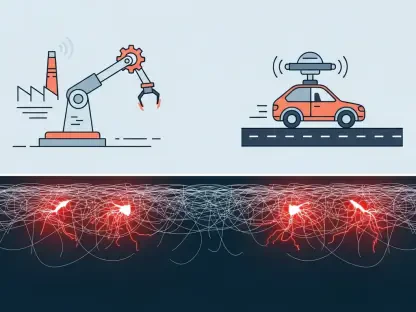What if a telecom giant could redefine itself as a leader in artificial intelligence, reshaping not just its future but an entire nation’s tech landscape? SK Telecom (SKT), South Korea’s powerhouse in telecommunications, is making that vision a reality with a groundbreaking move to consolidate its AI efforts. This strategic pivot, centered around a new independent unit called AI CIC, signals a seismic shift in how traditional industries are embracing cutting-edge technology. The stakes are high, and the ambition is palpable as SKT aims to carve out a dominant position in a rapidly evolving field.
This development isn’t merely a corporate reshuffle; it’s a calculated bet on AI as the cornerstone of tomorrow’s economy. With billions committed to this initiative, SKT is positioning itself at the forefront of innovation, aligning with global trends and national priorities. This story delves into the driving forces behind this transformation, the structure of the new unit, and the potential impact on both the company and the broader industry.
Why SK Telecom Is Doubling Down on AI
In an era where technology evolves at breakneck speed, SKT recognizes that AI isn’t just an add-on—it’s a game-changer for telecom. The decision to centralize AI operations under AI CIC reflects a deep understanding of market dynamics, where customer expectations for personalized services and seamless connectivity are skyrocketing. From smart assistants to optimized networks, AI offers tools to meet these demands, making now the critical moment for SKT to act decisively.
Beyond consumer needs, the competitive landscape is pushing telecom giants to transform into tech-driven entities. SKT’s focus on AI mirrors moves by global players who are integrating machine learning to enhance operational efficiency and unlock new revenue streams. South Korea, with its tech-savvy population and government-backed AI initiatives, provides fertile ground for such ambition, amplifying the urgency for SKT to lead rather than follow.
AI’s Role in Redefining Telecom’s Horizon
Zooming out, AI’s significance in telecommunications extends far beyond individual companies—it’s a linchpin for industry-wide evolution. Telecom operators worldwide are leveraging AI to revolutionize everything from customer support with chatbots to network management through predictive analytics. SKT’s consolidation of AI efforts taps into this trend, aiming to streamline services like messaging platforms and enterprise solutions under one cohesive strategy.
Moreover, this move aligns with South Korea’s national agenda to become a global AI hub. By investing in data centers and forging international partnerships, SKT is contributing to a larger ecosystem that prioritizes technological advancement. This synergy between corporate goals and public policy underscores how deeply AI is woven into the fabric of modern connectivity, promising benefits that ripple across society.
Inside AI CIC: Blueprint for a Tech Titan
At the core of SKT’s transformation lies AI CIC, a unit designed to unify fragmented AI operations into a powerhouse of innovation. This restructuring brings together consumer tools, business applications, authentication systems, and research under one roof, eliminating inefficiencies. With a staggering investment of 5 trillion Korean won (approximately US$3.5 billion) over the next five years, the scale of this commitment is undeniable.
The goals are equally ambitious, targeting an annual revenue of KRW 5 trillion (US$3.5 billion) by 2030. This isn’t a distant dream but a near-term plan, with the reorganization set to finalize within months from 2025. Such concrete timelines and figures highlight a meticulous approach, positioning AI CIC as a potential catalyst not just for SKT but for South Korea’s tech sector at large, setting a benchmark for others to follow.
Leadership Vision: Steering the AI Revolution
Driving this bold initiative is SKT CEO Ryu Young-sang, who also helms AI CIC with a clear sense of purpose. His belief in this being the “golden time for AI” resonates through his public statements, emphasizing the need to seize fleeting opportunities. Ryu’s insistence on consolidation as a means to avoid missed chances paints a picture of urgency and foresight in navigating uncharted technological waters.
His vision extends beyond corporate growth to fostering a robust domestic AI ecosystem. By aligning AI CIC’s mission with national interests, Ryu positions SKT as a key player in shaping South Korea’s technological destiny. This leadership perspective adds a human element to the strategy, revealing how personal conviction fuels a multi-billion-dollar endeavor in a high-stakes arena.
Strategies to Propel AI CIC Forward
Turning ambition into achievement demands a clear roadmap, and SKT has laid out actionable steps to ensure AI CIC thrives. Centralizing operations is a priority, designed to enhance efficiency and enable rapid responses to market shifts. This streamlined structure aims to cut through bureaucratic delays, allowing innovation to flourish at an accelerated pace.
Equally critical is the focus on internal growth, with plans to upgrade systems, nurture a performance-driven culture, and upskill employees. Agility remains a cornerstone, as AI CIC is built to adapt swiftly to technological advancements and competitive pressures. These strategies collectively form a robust framework, signaling SKT’s intent to not just participate in the AI race but to lead it with precision and adaptability.
Reflecting on a Pivotal Moment
Looking back, SKT’s decision to unify its AI efforts under AI CIC stood as a defining chapter in its storied history. The substantial financial backing and aggressive revenue targets reflected a fearless approach to embracing change. This transformation underscored a broader shift in telecom, where technology became the heartbeat of progress.
As the dust settled, the next steps became clear: sustained investment in talent and infrastructure was essential to maintain momentum. Collaboration with global partners and continued alignment with national goals offered pathways to amplify impact. For industry watchers and stakeholders, the challenge was to monitor how this bold strategy unfolded, potentially setting a precedent for others to emulate in the relentless pursuit of innovation.









